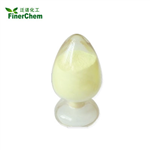Pyromellitic Dianhydride: Applications in Wastewater Treatment and its Preparation Method
May 10,2024
General Description
Pyromellitic Dianhydride, a versatile compound with strong electrophilic properties, is synthesized through the reaction of 1,2,4,5-Benzenetetracarboxylic Acid. It finds applications in polyimide synthesis, epoxy resin curing, and wastewater treatment. In wastewater treatment, Pyromellitic Dianhydride is crucial in the synthesis of BNPA2 composites, exhibiting excellent adsorption capacities for aromatic pollutants and superior photo-removal efficiency under visible light. The preparation method involves catalyzed reactions of para-xylene and air oxidation, offering simplicity, cost-effectiveness, and high selectivity. Pyromellitic Dianhydridestands as a valuable chemical intermediate with diverse applications in the chemical industry, showcasing its significance in various fields.

Figure 1. Pyromellitic Dianhydride
Overview
Pyromellitic Dianhydride, chemically known as PMDA, is an organic compound with the chemical formula C10H2O6. This versatile compound is primarily obtained through the reaction of 1,2,4,5-Benzenetetracarboxylic Acid with water, resulting in the elimination of two water molecules. Its white or slightly yellowish crystalline form, with a melting point ranging from 284-288°C, exhibits excellent chemical stability. Pyromellitic Dianhydride exhibits strong electrophilic properties, allowing it to engage in condensation reactions with nucleophilic reagents such as amines, alcohols, and imines, leading to the formation of amides, esters, and imines. Its primary applications lie in the synthesis of polyimides, owing to its ability to impart exceptional thermal stability and self-extinguishing properties to the resulting polymers. Additionally, it finds use as a curing agent for epoxy resins and a crosslinking agent for polyester resins. In conclusion, Pyromellitic Dianhydride stands as a valuable chemical intermediate with diverse applications in the chemical industry. 1
Applications in Wastewater Treatment
Pyromellitic dianhydride plays a crucial role in the synthesis of boron nitride-pyromellitic dianhydride composites, such as BNPA2, which exhibit remarkable capabilities in wastewater treatment. Through calcination at 350°C, BNPA2 is formed by reacting the hydroxyl (OH) groups in boron nitride (BN) with PA. This composite demonstrates exceptional adsorption capacities, particularly evident in its ability to adsorb various aromatic pollutants like rhodamine B (RhB), neutral red (NR), methyl orange (MO), tetracycline (TC), and atrazine (AT) from wastewater. Under visible light irradiation, BNPA2 with Pyromellitic dianhydride displays superior photo-removal efficiency for RhB, NR, and MO, attributed to its negative surface charge, facilitating the preferential removal of cationic dyes. Additionally, electrostatic interactions between BNPA2 and the dyes, as well as among the dyes themselves, significantly influence the removal process. Importantly, the photocatalytic activity of BNPA2 with Pyromellitic dianhydride, driven by •O2- radicals generated under visible light, enables the degradation of colorless TC and AT, extending its applicability beyond dye removal. Furthermore, BNPA2 with Pyromellitic dianhydride exhibits excellent regenerability, as its removal performance for RhB, TC, and AT can be effectively restored through visible light irradiation. This multifunctional composite offers a promising solution for the efficient removal of aromatic pollutants from wastewater, combining adsorption and photodegradation mechanisms to achieve comprehensive water treatment. 2
Preparation Method
The method for preparing Pyromellitic Dianhydride involves two key steps. Firstly, para-xylene undergoes a catalyzed reaction with dichloroethane in an organic solvent, such as dichloroethane, cyclohexane, chlorobenzene, dichlorobenzene, or a mixture thereof, facilitated by aluminum trichloride or iron trichloride. This yields 2,2’,4,4’,5,5’-hexamethylbiphenyl as a crude product. Secondly, the crude product is subjected to gasification and catalyzed air oxidation at temperatures ranging from 350 to 500°C, typically with a vanadium-based catalyst. The reaction pressure is usually atmospheric, and the air oxidation process involves a feed gas velocity of 3000-8000h-1 and a concentration of 2,2’,4,4’,5,5’-hexamethylbiphenyl in the air of 5-40g/m3. The molar ratio of para-xylene to aluminum trichloride or iron trichloride in the first step ranges from 1:0.05 to 1:1.5, while the volume ratio of para-xylene to organic solvent is 1:1.5 to 1:5. The reaction temperature for the first step is 0-80°C, preferably 0-50°C. This method offers advantages of simplicity, low cost, high selectivity, and high conversion rates in the production of Pyromellitic Dianhydride. 3
Reference
1. Pyromellitic dianhydride. National Center for Biotechnology Information. 2024; PubChem Compound Summary for CID 6966.
2. Guo Y, Wang R, Yan C, Wang P, Rao L, Wang C. Developing boron nitride-pyromellitic dianhydride composite for removal of aromatic pollutants from wastewater via adsorption and photodegradation. Chemosphere. 2019; 229: 112-124.
3. Ma LL, Feng BC, Yu F, Wang YZ, Guo C. Preparation of pyromellitic dianhydride. 2019; Patent Number: CN109666032.
- Related articles
- Related Qustion
- Pyromellitic Dianhydride: A Promising Candidate for Creating Functional Carriersbility and Safety Jan 3, 2024
Pyromellitic dianhydride is a white powder with moderate lipophilicity, used to synthesize cyclodextrin polymers for drug delivery, but poses safety hazards.
- Pyromellitic dianhydride: applications and toxicology Jul 20, 2023
Pyromellitic dianhydride has various applications in polymer synthesis, wastewater treatment, solar cell fabrication, but it also has toxicity concerns.
- What is Pyromellitic Dianhydride? Dec 30, 2019
Pyromellitic dianhydride (PMDA) is an organic compound with the formula C6H2(C2O3)2. It is the double carboxylic acid anhydride that is used in the preparation of polyimide polymers such as Kapton.
Supplementation with pyridoxal 5'-phosphate monohydrate can synthesize neurotransmitters such as dopamine and serotonin, maintaining a healthy nervous system.....
Nov 4,2025Biochemical EngineeringTris Hydrochloride is widely used in biochemistry for its versatile pH range and compatibility. Precautions include pH control and avoiding interference, despite limitations.....
May 10,2024APIPyromellitic Dianhydride
89-32-7You may like
Pyromellitic Dianhydride manufacturers
- Pyromellitic dianhydride
-

- $0.00 / 25Kg/Drum
- 2025-11-15
- CAS:89-32-7
- Min. Order: 1KG
- Purity: 99%
- Supply Ability: 500mt/year
- Pyromellitic Dianhydride
-

- $10.00 / 1KG
- 2025-11-14
- CAS:89-32-7
- Min. Order: 1KG
- Purity: 99%
- Supply Ability: 10 mt
- 1H,3H-Benzo[1,2-c:4,5-c']difuran-1,3,5,7-tetrone
-
![89-32-7 1H,3H-Benzo[1,2-c:4,5-c']difuran-1,3,5,7-tetrone](/ProductImageEN/2023-04/Small/d45dde99-3bfa-4000-ab5a-3b78cca8b746.jpg)
- $458.00 / 10g
- 2025-10-16
- CAS:89-32-7
- Min. Order: 1g
- Purity: 0.95&0.99
- Supply Ability: 1000






